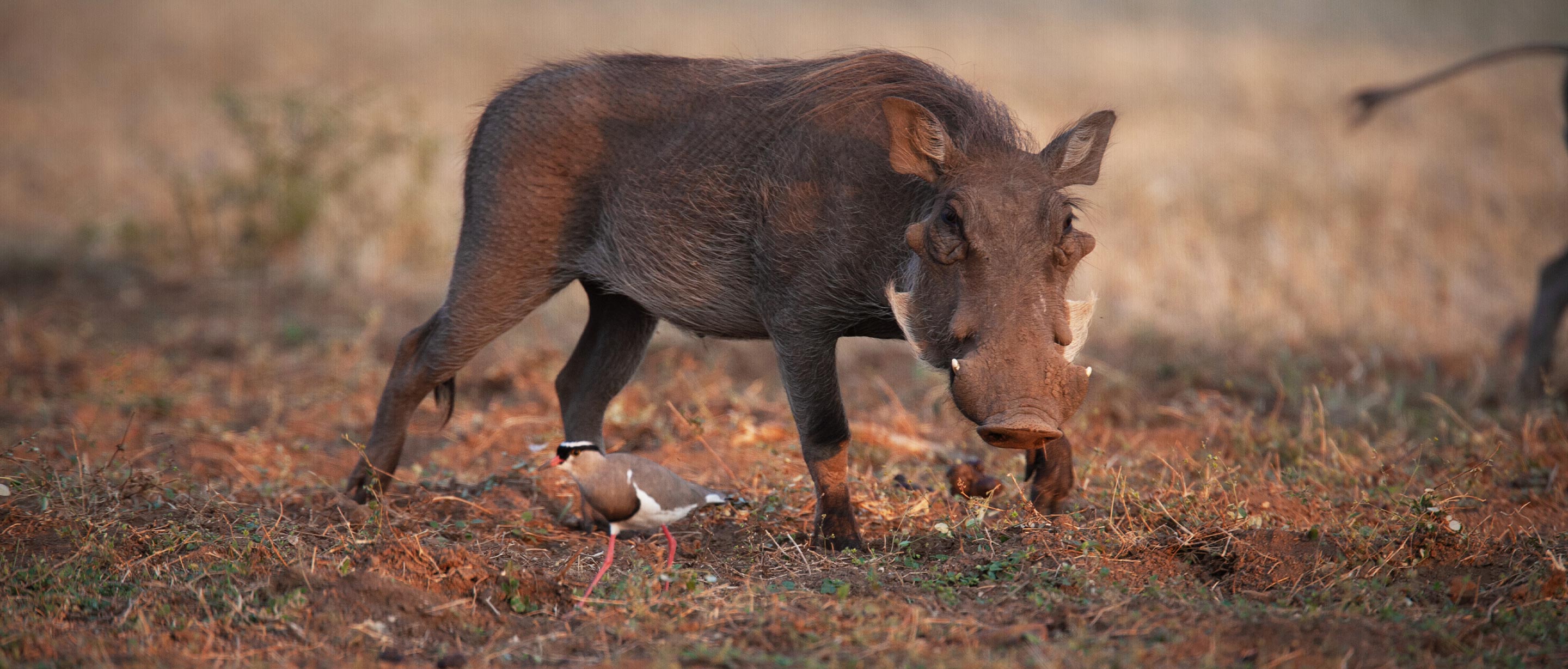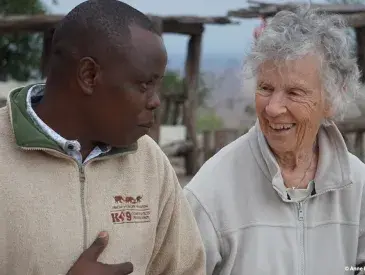What is a warthog?
The warthog is a tough, sturdy animal. Males weigh 9 to 23 kilograms (20 to 50 pounds) more than females, but both are distinguished by disproportionately large heads and “warts” — thick protective pads that appear on both sides of the head. Their large tusks are unusual: the two upper tusks emerge from the sides of the snout to form a semicircle; the lower tusks, at the base of the uppers, are worn to a sharp-cutting edge. Sparse bristles cover their body, and longer bristles form a mane from the top of the head down the spine to the middle of the back. Their long tail ends with a tuft of bristles. Warthogs characteristically carry their tails upright when they run, the tuft waving like a tiny flag.
Phacochoerus aethiopicus (desert/cape warthog); Phacochoerus africanus (common warthog)
50 to 150 kilograms (110 to 330 pounds)
90 to 150 centimeters in length (35 to 60 inches)
15 to 18 years in the wild; up to 20 years in captivity
Savanna
Omnivorous
About 6 months
Lions, leopards, humans, crocodiles, and hyenas
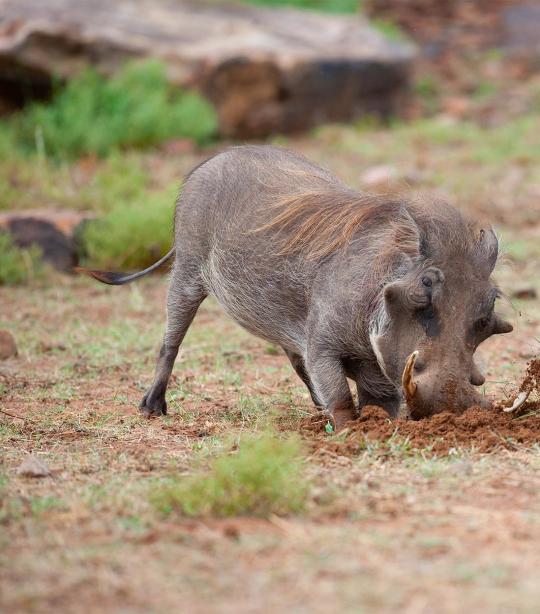
Challenges
Human-wildlife conflict poses a threat to warthogs.
Warthogs are killed for raiding wheat, rice, beans, or groundnut fields. In some agricultural areas, people are also eliminating this species, as they can potentially carry African swine fever.
Solutions
Our solutions to protecting the warthog:
African Wildlife Foundation works with governments and local communities to designate wildlife corridors — large swaths of land that wildlife can use to roam from one park, or country, to another. Corridors link protected areas and allow warthogs to move between them safely.
AWF works with rural communities living in close proximity to wildlife to build schools. In exchange for practicing conservation and refraining from such practices as retaliatory killing, communities receive schools with technology labs and conservation curriculums. In Tanzania, AWF rebuilt Manyara Ranch Primary School. By working with communities to provide tangible incentives for conservation and education on the need for conservation, we are able to foster a culture of conservation.
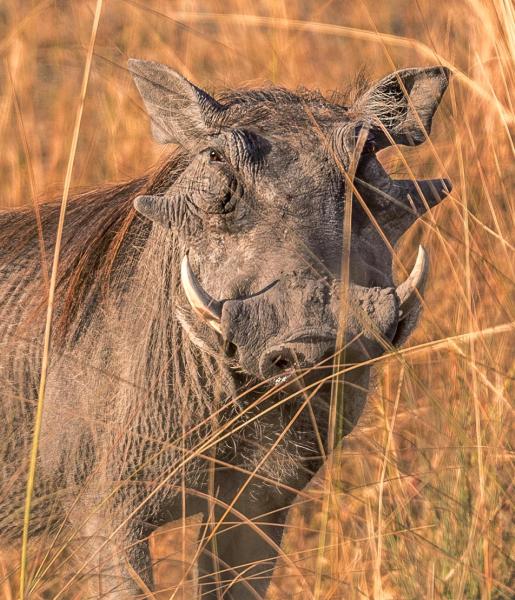
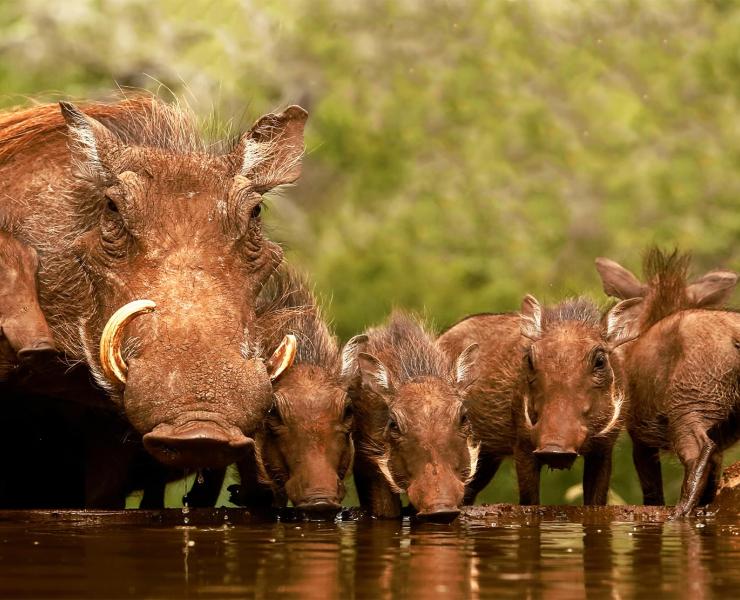
Behaviors
Warthogs have a practice of trespassing on others’ homes.
Although they can excavate, warthogs normally use holes dug by other animals, like aardvarks. They sleep and rest in holes. The shelter holes provide is important for their thermoregulation — having neither fur nor fat, this species lacks both protection from the sun and insulation from cold. Sometimes, they will fill the holes with grass for warmth.
Males prefer a bachelor’s lifestyle — only joining females to mate.
Warthogs live in family groups composed of a female and her young. Sometimes, two families, often of related females, will join together. Males normally live alone, only joining these groups to mate.
Female warthogs abandon their young.
Before giving birth to a new litter, the female will chase away the litter she has been raising and goes into isolation. These abandoned juveniles may join up with another solitary female for a short time before they go out on their own. The female suckles the new litter, and each piglet has its own teat, suckling exclusively from it. Even if a piglet dies, the others do not suckle from the available teat. As such, litter sizes are usually confined to four young because females only have four teats.
Diet
The warthog really puts its back into eating.
This species takes feeding seriously. They have developed an interesting practice of kneeling on their calloused, hairy, padded knees to eat short grass. They will also use their snouts and tusks to dig for bulbs, tubers, and roots during the dry season. During the wet season, they may eat earthworms and other small invertebrates.
Habitats
Where do warthogs live?
They are found in moist and arid savannas. They avoid rainforests, deserts, and high mountains.
